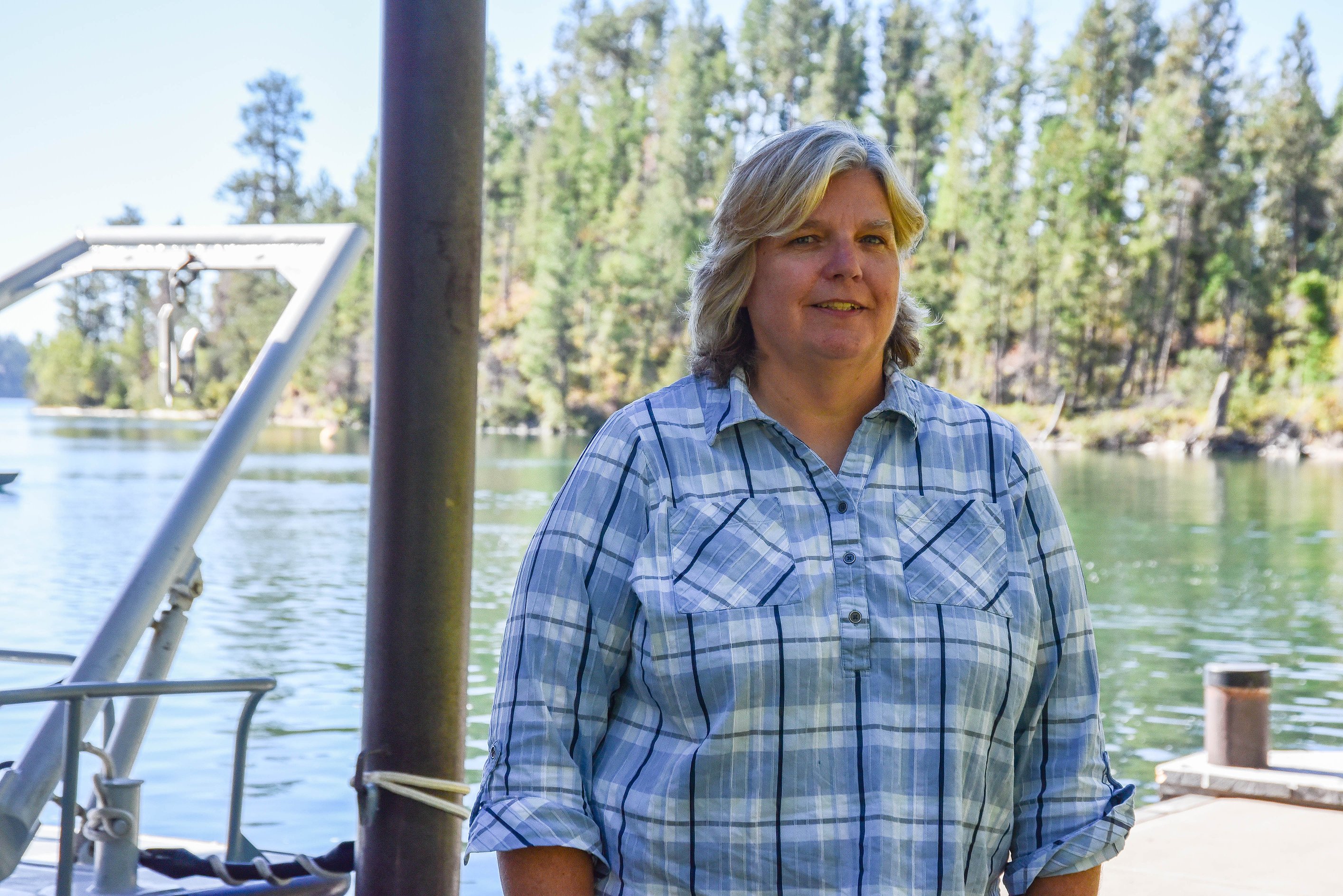Flathead Lake Biological Station analyst leverages technology in scientific study
Diane Whited moved to the Flathead Valley for a one-year research position with the Flathead Lake Biological Station in 1999. Twenty-five years, she’s celebrating over two decades of continued work there.
“At the time I was like, I guess I can do anything for a year,” Whited said. “Well, the projects just kept rolling in; 25 years later I’m still here and hope to end my career here.”
Whited is a geographic information system, or GIS, and remote sensing analyst at the biological station, specifically specializing in the study of how habitats are organized throughout a river ecosystem and how those components change over time.
The natural environment was familiar to Whited, who grew up on a farm in northwest Iowa. She attended Iowa State University for her undergraduate degree in landscape architecture before getting her master's at the University of Minnesota in 1996.
While in Minnesota, Whited worked with the National Park Service as a landscape architecture intern at the St. Croix National Scenic Riverway, where she helped lay out trails and design picnic shelters. While the design side of landscape architecture was interesting, Whited quickly discovered what she loved about the field wasn’t so much the design, but rather the natural resources associated with the projects she was laying out.
She started working with a natural resource specialist on the St. Croix, studying how the river’s islands were eroding over time, mostly due to boat wake. Her knack for the natural world continued post-graduation at the University of Minnesota, where she worked with a wetland ecologist, studying the diversity of wetlands across Minnesota.
Site and land use planning in land architecture requires GIS, a computer system that analyzes spatial data and maps it out, something that Whited learned she enjoyed.
“That’s how I got to doing more research per se,” she said, sitting in the lobby of the main building at the station’s Yellow Bay campus on Flathead Lake.
Her first project at the Flathead Lake Biological Station was called The Reaches Project in the Yakima River Basin in Washington. Alongside a team of researchers, Whited quantified an amount of habitat in a portion of the river for potential salmon habitat.
From that point forward, the projects just kept coming, Whited said.
One of her favorite projects she worked on was a study of the Nyack Flood Plain along the Middle Fork of the Flathead River, which the station has been monitoring for around four decades. Whited’s paper looked at how the habitat has changed since 1945.
The study revealed that natural systems can withstand major flooding disturbances — such as the flood in June of 1964 — over time the landscape recuperates.
“We have free flowing rivers that have hardly any human disturbance in this area, so we show that while these habitats move around through space and time... the relative abundances of them stay the same,” she said.
Currently, Whited is studying how flood plains are changing due to glacier recession in Alaska and Canada.
“What I really like about my job is working with fisheries biologists, water chemistry experts and others. They take the type of data I produce for them and relate it to the biology, and I think that that’s the real powerful component of the type of work we do here, relating that spatial element to wildlife,” Whited said.
No stranger to the education world, Whited also taught at Flathead Valley Community College in the past and worked with college classes on a study on the effects of hail damage on ponderosa pines in the Bigfork area. As a Fulbright specialist, Whited taught in Switzerland.
One of the cooler parts of a longer tenure at the Biological Station, Whited said, is watching those students build their own careers.
“I’ve interacted with students, graduate students, other staff and it's been really cool to see students I helped progress through their careers. Some are now professors, integrating the type of work that I do, so just passing that knowledge on to future staff has been so rewarding,” she said.
Today, Whited lives in Woods Bay among the landscapes that have built her professional life. As technology progresses, Whited said, the possibilities of spatial mapping continue to expand beyond natural resources, with applications in a wide range of fields from health care to politics.
In the meantime, Whited looks forward to continuing her time, if grant funds allow, at the Biological Center, producing data to better inform management, conservation and recreation.
“If I can provide data to the staff here and biologists to help them with their studies that makes me really happy,” she said.
Reporter Kate Heston can be reached at kheston@dailyinterlake.com or 758-4459.  Diane Whited, a GIS and remote sensing analyst at the biological station, celebrates 25 years of work this year. (Kate Heston/Daily Inter Lake)
Diane Whited, a GIS and remote sensing analyst at the biological station, celebrates 25 years of work this year. (Kate Heston/Daily Inter Lake)



